Many people would download and install a lot of software after using the computer for a while. So they are likely to find that the space of C drive is becoming smaller or even insufficient. In addition to frequently deleting useless files and cleaning up disk fragmentation, we can also solve it by extending the space of C drive.
Method 1: Move some big files to D drive or others
It is a simple and not time-consuming solution. A large amount of space would be released after use. It is highly recommended for general users since it won't affect the running of the computer and won't lose data even with the wrong operation. The large files of C disk include temporary files, pagefiles, and download files. So, this part tells you how to move temp files, pagefiles, and download files to D drive or any other drives.
Here are specific steps to move Temp files to D drive:
Step 1: Right-click "This PC" and choose "Properties".
Step 2: In the following interfaces, click "Advanced system settings" and then select "Environment Variables".
Step 3: In the interface named Environment Variables, select TEMP and click Edit.
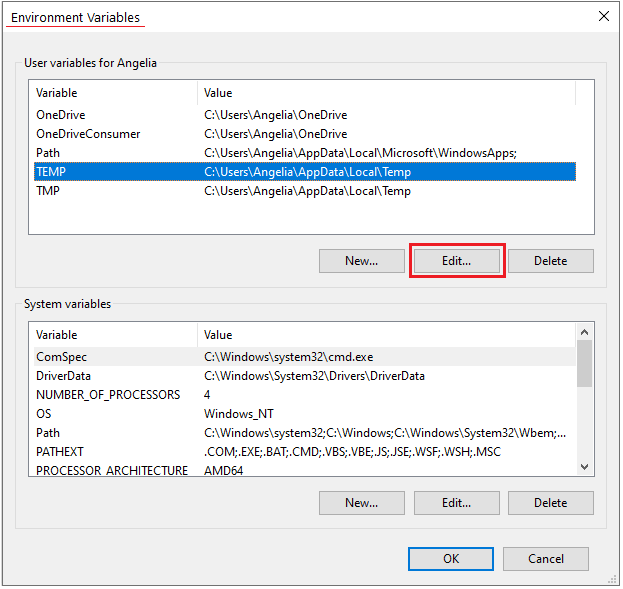
Step 4: Enter the file path in the Variable value or click Browse Directory to choose the desired location. Then click on OK to confirm.

Step 5: Follow the same steps to move TMP files to the D drive. TEMP and TMP are folders used by Windows and other apps to store temporary files. So the files in the Temp folder also need to be moved.
Step 6: Delete files in the TMP and TEMP directories of the C drive that can be deleted, while some may not be deleted.
Here are specific steps to move pagefile.sys to D drive:
Step 1: Right-click "This PC" and choose "Properties".
Step 2: In the interface named System, click "Advanced system settings". Then click the "Settings" button under the Performance section.
Step 3: In the interface named Performance Options, choose the Advanced tab. Then click the Change button.
Step 4: Uncheck Automatically manage paging file size for all drives. Then for the C drive, select the option No paging file and click on the Set button.
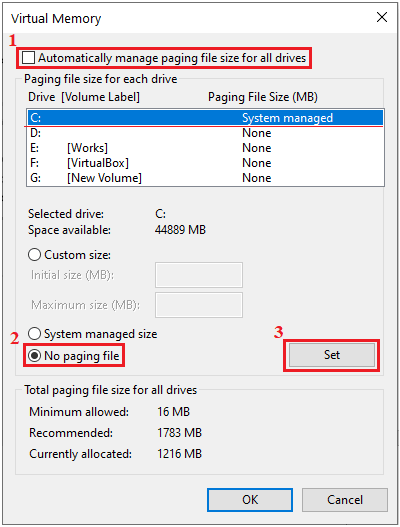
Step 5: Choose D drive, select the option System managed size and click on Set button.
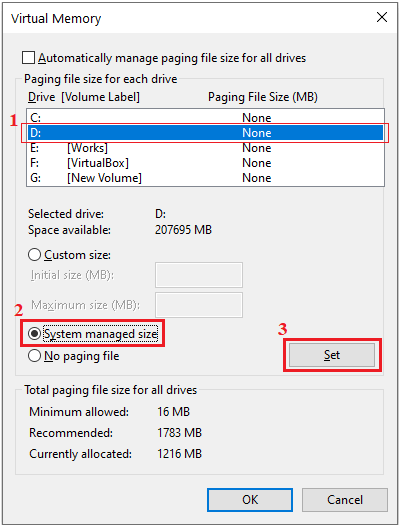
Step 6: Delete the pagefile.sys in C drive.
After moving these files to the D drive, the C drive can release 8GB to 40GB of space. Therefore, the C drive won't run out of space easily as it used to.
Method 2: Extend the C drive space with the D drive
Merge all D drive space to the C drive
Follow this procedure to enlarge the C drive with all space of the D drive.
Step 1: Copy all data in drive D to another drive.
Step 2: Run Disk Management: Right-click "This PC" and choose "Manage". In the pop-up window, select "Disk Management".
Step 3: Right-click D drive, choose Delete Volume, and then choose "Yes" to confirm this operation. If you can’t click "Delete Volume", please delete all data in the D drive first.
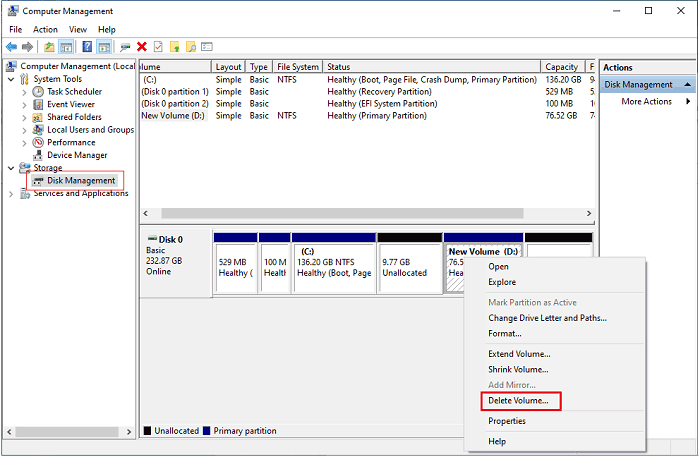
Step 4: Right-click C drive, and choose Extend Volume.
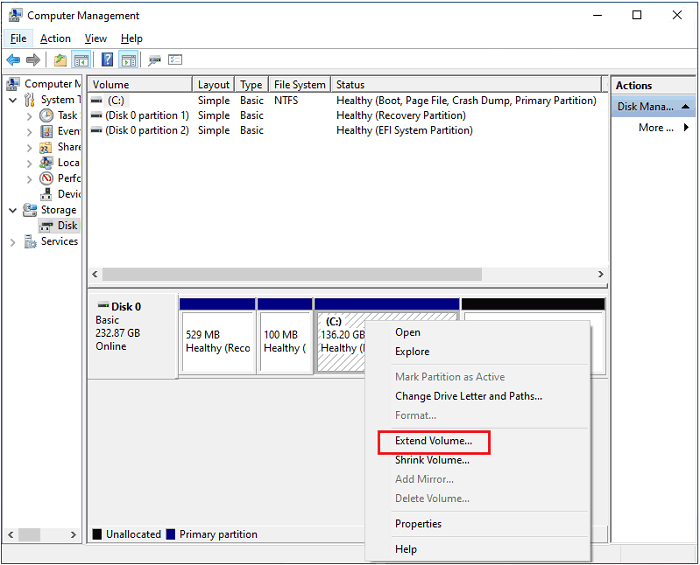
Step 5: Follow the guide to add all unallocated space to the C drive.
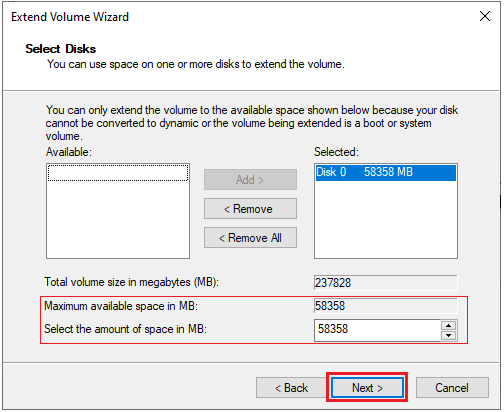
Use part of D drive space to extend the C drive
The first four steps here are the same as the first four steps in "Merge all D drive space to C drive". Please follow the first four steps above to enter the interface "Extend Volume Wizard". Then continue with the following steps.
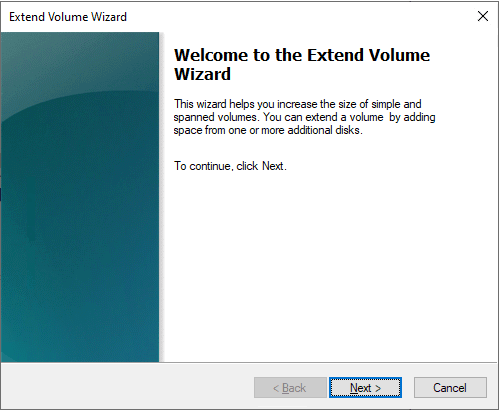
Step 5: Click "Next" to open extend space windows. Enter the amount of space you need in the section "Select the amount of space". Then click on the "Next" and "Finish" button. In this way, the space of the C drive is extended. Please note that we need to leave enough space for the D disk.
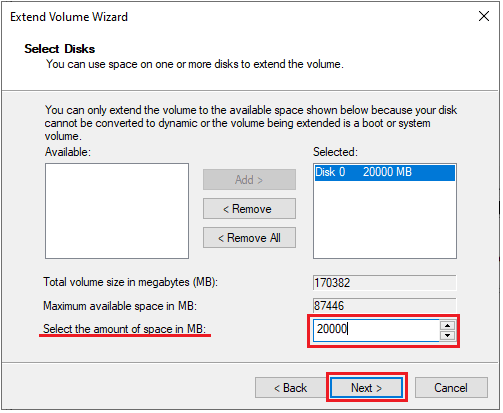
Step 6: After extending drive C, we still need to create drive D.
Right-click unallocated space and choose "New Simple Volume". Then follow the guide to assign the drive letter as D and format it. Click the Finish to create a D drive.
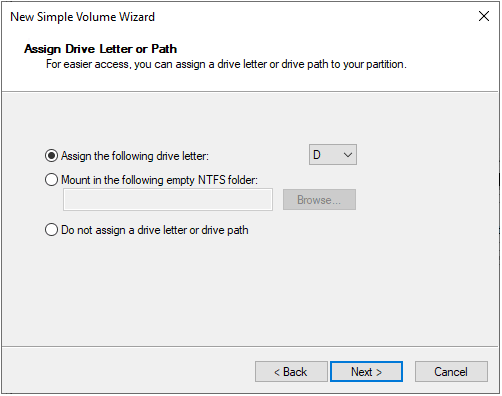
Step 7: Copy files back to drive D.

No comments:
Post a Comment